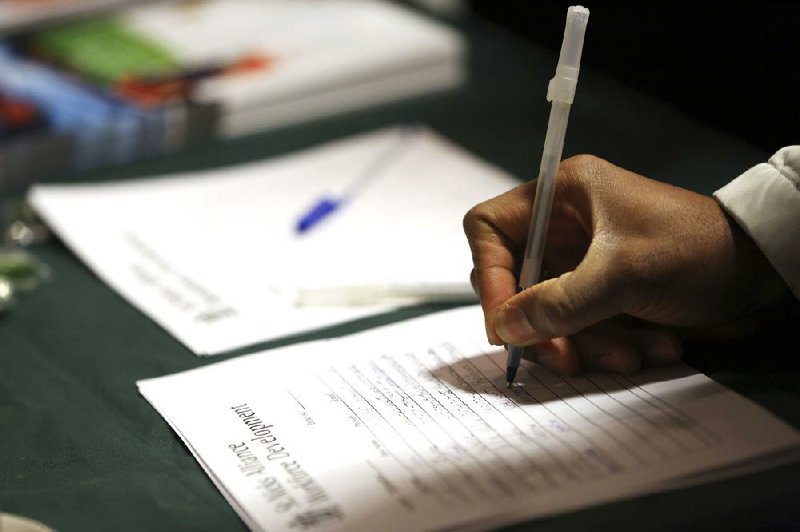WASHINGTON — Weekly applications for U.S. unemployment benefits ticked up slightly last week.
The Labor Department said Thursday that applications rose 4,000 to a seasonally adjusted 371,000, the most in five weeks. The previous week’s total was revised lower.
The four-week average, a less volatile measure, increased 6,750 to 365,750. It had fallen to a four-year low the previous week.
“Claims are in a pretty steady range, but the story isn’t in firings so much as it is in hiring,” said Michael Hanson, a senior U.S. economist at Bank of America Corp. in New York. “Hiring has been okay. The process is sluggishly moving forward. We need to see better payrolls data to get faster economic growth.”
A department spokesman says all states reported data and none were estimated. In the previous two weeks, the department relied heavily on estimates because many states weren’t able to report data over the holidays.
The figures “continue to suggest steady but modest U.S. employment gains,” Robert Kavcic, senior economist at BMO Capital Markets, said in a note to clients. “That said, claims stubbornly refuse to break below the ... range that has been in place for the past year.”
Weekly applications are a proxy for layoffs. They have fluctuated for most of the past 12 months between 360,000 and 390,000. At the same time, job growth has been stable.
Employers added 155,000 jobs in December, the department said last week, while the unemployment rate remained 7.8 percent. The gain in hiring nearly matched the average of 153,000 jobs per month in 2011 and 2012. That’s been just enough to slowly push down the unemployment rate, which fell 0.7 of a percentage point in 2012.
December’s steady job gain suggests employers didn’t cut back on hiring in the midst of the debate over federal tax and spending changes. Many economists feared that the prospect of higher taxes and steep cuts in federal spending would cause a slowdown in job gains.
That’s a good sign, since more budget showdowns are expected. Congress must vote to raise the government’s $16.4 trillion borrowing limit by around late February. If not, the government risks defaulting on its debt. Republicans will likely demand deep spending cuts as the price of raising the debt limit.
The number of people continuing to receive unemployment aid dropped to 5.36 million in the week ended Dec. 22, the most recent data available. That’s down about 50,000 from the previous week.
Still, hiring is too weak to rapidly reduce the number of unemployed, which stands at 12.2 million. That’s far higher than the 7.6 million who were out of work when the recession began in December 2007.
There are signs the economy is improving. The once-battered housing market is recovering, which should lead to more construction jobs in the coming months. A gauge of U.S. service firms’ business activity expanded in December by the most in nearly a year. Auto sales for 2012 were the best in five years. And Americans spent more at the end of the crucial Christmas shopping season.
U.S. employers advertised about the same number of jobs in November as in October.
Job openings ticked up 11,000 last month to 3.67 million, the Labor Department said Thursday. That’s about 12 percent more than were advertised in the same month a year ago.
The number of available jobs is slowly climbing back to the roughly 4 million that were advertised each month before the recession began in December 2007.
More than 12 million people were unemployed in November. That means there were 3.3 unemployed people, on average, competing for each open job. That’s the lowest ratio since November 2008. Still, in a healthy economy, the ratio is roughly 2-to-1.
Overall hiring was largely unchanged in November, according to the Job Openings and Labor Turnover Survey. Companies hired 4.3 million people, just 3,000 more than in October. Layoffs ticked down to nearly 1.7 million, 10,000 below October’s number.
The number of people who quit their jobs rose, but was little changed compared with this summer.
More people quitting can be a good sign for the job market. Most people quit when they move to another job.
Job openings rose in retail and hotels and restaurants, which likely reflect holidayrelated gains. Openings ticked down in construction and manufacturing.
Information for this article was contributed by Christopher S. Rugaber of The Associated Press and Shobhana Chandra and Chris Middleton of Bloomberg News.
Business, Pages 25 on 01/11/2013

